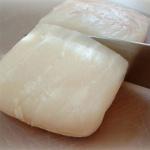The abundance of alcoholic beverages on the shelves of our stores, however, does not affect the reduction in the cost of these products. And a simple esthete cannot afford store-bought products.
A simple design of a mini-factory for the production of homemade moonshine (alcohol) is proposed. Anyone with basic knowledge of physics and chemistry can assemble the proposed design.
Structurally, the device is made in a three-liter glass jar. The process technology consists of condensing alcohol vapor on a cooler and then collecting the resulting condensate in a container.
At the initial stage, we manufacture the parts of the device. The cooler is a 0.5 liter metal container filled to the brim with small metal parts (nuts, bolts, washers, nails, etc.). We pierce two holes in the upper part of the container to secure the rope. The best material is copper. After filling the can with metal, the free volume of the container is filled with water. The container is placed in the freezer for cooling.

At the second stage, we make a watering can and a container for collecting the finished product. The material for the watering can will be any PET bottle with a capacity of 0.5 liters. We cut the bottle at a distance of 60 mm from the neck. We make a container for collecting ethyl alcohol from another 0.33 liter aluminum can of beer or carbonated drinks. The height of the required container from the bottom to the top edge is 70 mm. The capacity of the manufactured container will be about 50 ml. In the upper part of the container we pierce two opposite holes for attaching the rope.

Assembling the structure involves sequentially stringing a container, a watering can, a cooler and a jar lid onto a rope.

To obtain alcohol, you need to pour raw materials into the jar. This could be mash, wine, etc.

Pour 200-250 ml of raw materials into a three-liter jar. Remove the cooler from the refrigerator and assemble the structure. Place the assembled structure into the jar. Close the jar tightly with a plastic lid.


In the summer, when steam heating is not working, lower the jar into a container of hot water. Maintain water temperature within 50°C. The process will also last about 10 hours.
The main advantage: this is a practically free device for preparing moonshine (alcohol) in winter conditions. We freeze the cooler jar outside (it’s very good for those who have a balcony or loggia), and we place the evaporator itself on a steam heating radiator. If you have your own raw materials, then everything is practically free, and there is no smell during distillation.
One such device gives approximately 50 ml in 10-12 hours. alcohol, if there are two of them, then 100 ml.
Unfortunately, for many lovers of strong alcoholic drinks, it is quite difficult to buy high-quality alcohol these days, especially when it comes to vodka. According to statistics, up to 40% of alcohol in a store is counterfeit. And these numbers are quite real. Therefore, many are thinking, and some have already acquired home mini-distilleries. For those who are still at the planning stage, the question of how to make a moonshine still with your own hands will be relevant.
This is the first question that is worth deciding for yourself. And it is impossible to find a definite answer to it. Each case will have its own pros and cons. Of course, for a beginner it will be much easier to buy a ready-made device, since there is no need to spend a lot of time and effort, and you can immediately get a ready-made delicious drink.
Do-it-yourself moonshine still from a keg
On the other hand, prices for ready-made moonshine stills are steep, and finding exactly what you need is difficult. Most of them have unnecessary parts or need reworking. But the need to determine the exact parameters of the device comes with experience.
If you assemble a simple moonshine still with your own hands, then the obvious advantage is the ability to make the device “for yourself.” However, there are pitfalls here too - there is no limit to perfection. You can get stuck for a long time at the stage of manufacturing the device and never get to the production of the product.
First, it’s worth understanding what types of moonshine stills exist. There are two main types of devices for producing alcohol at home: distillers and rectifiers. Distillers are ordinary moonshine stills in which a pure product is obtained from the mash by evaporating and dividing the moonshine into fractions.
It must be said that the separation is very conditional; during the first distillation, even if you separate the first and last fractions (they are filled with harmful impurities), the moonshine is still not very pure. Repeated distillations make it purer. Most often, at least two are required. But some craftsmen do this many times.
Rectification is fundamentally different. In the distillation column, fractions are constantly exchanged between the gas and liquid phases, after which the product is divided into fractions. A drink prepared using a distillation column will be much purer; this is exactly how vodka is made during production in a factory.
But it is worth noting that mash cannot be driven through this column, only raw alcohol, that is, which was previously distilled in a moonshine still. In addition, many doctors have proven that high-purity alcohol has not only positive, but also negative effects, since it is quickly absorbed by the body, causing intoxication much earlier than moonshine.
So, we will consider the process of creating a moonshine still using a distiller as an example, since it is enough to get a quite decent product. To assemble a simple moonshine still, you will need the following parts:
- A distillation cube is a device where the mash is heated to boiling point.
- Refrigerator - a container with cold water where the coil is cooled. It is advisable that the water be running.
- A coil is a copper tube in the form of a spiral, less commonly made of glass or stainless steel, through which the product moves and condenses.
- A dry steam tank is a container for catching fusel oils and raw material residues. Optional part.
- The receiving container is the place where the finished product ends up.
- Connections.
Alembic
Making a moonshine still with your own hands begins with a distillation cube. This cube is essentially the heart of the distiller. The mash boils and evaporates in it. It's easiest to take it ready-made.
First, you need to decide on the volume of the cube. For home production, 10 liters will be enough. With 20 liters you can please yourself and your guests, but they take more for sale, which is prohibited by law.
In addition, it is worth deciding on the material of the device. What is a distillation cube made from?
- Aluminum is well suited as a metal for moonshine. It is not deformed, not damaged, and can withstand many years. The main thing is not to rub when cleaning, so as not to remove the protective oxide film.
- Enameled containers used as cubes are common, but not very suitable. Impact and temperature remove the enamel, and rust corrodes the container.
- Stainless steel is the best material for a cube, durable and reliable. The main thing is that it is stainless steel and not galvanized.
- A glass cauldron is aesthetically pleasing, but not practical, so it is rarely used.
Most often used as a finished still:
- The milk can is a good, proven container. The main task is to throw away the rubber gaskets and replace them with food-grade silicone.
- A pressure cooker is the simplest type of container for use in urban environments. The main disadvantage is low performance.
- An enamel pan - if you can’t find anything else, this will do, but it’s not recommended at all.
- Stainless steel cube - this can be a finished cube or a container that had another use, for example, a beer keg. The main thing is to pay attention that the neck is wide.
Another point is the process of heating the mash. If you are not particularly versed in how to install heating elements into a moonshine still at home, then the best way would be to heat the container on an electric stove. It is not advisable to use a gas one, as an open flame may cause the alcohol to ignite. Induction furnaces are also a good option, but in practice they are poorly applicable, since it will be necessary for the distillation cube to have a flat bottom made of magnetic metal.
Moonshine still refrigerator
In order to properly make a refrigerator, several parameters should be taken into account:
- Material. The first requirement that applies to the coil material is the absence of reactions with alcohol. In addition, it should be able to withstand temperatures up to 100 degrees without any problems and have high thermal conductivity. Copper meets all these qualities better than others. Stainless steel is also suitable, but its thermal conductivity is much lower. Copper also makes sense because it can be easily bent into a spiral. In many countries, copper is considered the best material for making distillers. The disadvantage of copper is that it requires constant cleaning.
- Tube dimensions and thickness. The longer the tube, the more the moonshine cools on the way to the receiving container. But there is also a side effect: the colder the liquid, the slower it moves. Again, with a large internal diameter, the alcohol cools faster, but moves more slowly; a small one is difficult to process. Thus, the following parameters will be optimal: length - 1.5–2 meters, internal diameter - 8–12 mm, thickness - 0.9–1.1 mm. In some moonshine stills, the coil is horizontal - this makes no sense at all. Vertical is the best option.
Parameters of the refrigerator itself:
- Substance: Usually air, water or ice is used. It is preferable to use water as the most practical means.
- Heat removal scheme: open and closed. In open circuits, water circulates. This structure of the apparatus is the most advantageous.
- Direction of water supply. It is correct to supply water from below and take it from above. Then the water will move towards the steam, and the cooling efficiency will be as high as possible.
- To make a refrigerator, you will need a tube for the coil and a pipe with a diameter of 75–80 mm. First of all, sand is poured into the coil tube so that the metal does not flatten when curling. The ends must be hammered in so that the sand does not spill out; you can immediately weld a nut onto one of them.
Wind the tube onto a smooth cylinder with a diameter of approximately 35–40 mm, the pitch between turns should be about a centimeter. Next, the ends of the coil are released, it is washed and installed in the refrigerator. The operating speed of such a refrigerator using a copper tube and running water will be approximately three liters per hour.
Sukhoparnik
Let's consider the option of manufacturing another element of the moonshine still - a steamer. This, as already mentioned, is not a necessary thing, but it can improve the quality of the product. The steamer is located between the refrigerator and the distillation cube. How does a dry steam tank work? The principle of its operation is as follows: during the boiling of alcohol, fusel oils, whose boiling point is higher, are partially captured. In the process of preparing moonshine, it is necessary to get rid of them, since these impurities not only give it an unpleasant odor, but are also very harmful.
Hot steam enters the steam tank and condenses; as further vapor ingress occurs, the water will re-boil. The process of secondary evaporation occurs more gently, so most of the fusel oils condense in the steam tank. Several of them can be used for even better cleansing. In addition, it is convenient to have a collapsible steamer or at least with a drain valve. The size of the steamer is selected taking into account the capacity of the distillation cube, so that it does not overfill and at the same time does not greatly slow down the distillation process.
For example, if the size of the distillation cube is 30–40 liters, then the dry steamer should be made for three liters, for a smaller cube, for example, 10 liters - a liter and so on.
It is a jar made of the same substance as the rest of the moonshine still. Fittings are cut into the lid of such a jar to connect the steam inlet and outlet tubes.
If you make the steamer dismountable, then during the second or third distillation you can put dried fruits or other products into it so that the moonshine is saturated with a pleasant smell and taste.
Important: the volume of the steam tank must be sufficient so that it does not overfill, which could result in an accident.
It is advisable to extend the steam exhaust tube to the very bottom of the jar in order to eliminate the possible passage of condensed vapor into the refrigerator.
Tubes and hoses
How to assemble a moonshine still, or rather, its parts, into one device? After you have prepared the refrigerator and the distillation cube, and also, if desired, made a steamer, it becomes necessary to connect all this together.
This is done using tubes. On the market you will be offered to purchase rubber, copper, PVC or silicone tubes. The latter are best suited, as they are not afraid of exposure to temperature, do not deform, do not bend, and are easy to change and wash.
The use of rubber and PVC is undesirable. Both materials do not withstand temperature well and will give moonshine an unpleasant smell and taste. Copper tubes can also be used, but then the structure will not be collapsible and will be difficult to clean.
Copper tubes have another disadvantage. In order to connect all parts of the device with them, you must have welding skills. Moreover, such welding must be of high quality, because tightness is required.
To make the assembly of the structure simple, you need to use silicone hoses. At the connection points, they will need to be fitted with screw-on clamps. Another option is corrugated stainless steel, but the gaskets in such pipes must be replaced with silicone ones.
In general, like all hoses, rubber gaskets are also not recommended. They will melt, and harmful substances may get into the moonshine. In addition, it will give off a persistent smell of burning rubber.
Thus, making a homemade moonshine still is not so difficult. In a simple version, these will simply be ready-made containers connected to each other. If you work a little more, you can assemble the distillation cube yourself, but in most cases this is not required. Such a distiller for moonshine will be reliable, durable and valuable, since it is made with your own hands. In addition, it will satisfy all the requirements of the author.
Preparation of moonshine and alcohol for personal use
absolutely legal!
After the collapse of the USSR, the new government stopped the fight against moonshine. Criminal liability and fines were abolished, and the article banning the production of alcohol-containing products at home was removed from the Criminal Code of the Russian Federation. To this day, there is not a single law that prohibits you and me from engaging in our favorite hobby - preparing alcohol at home. This is evidenced by the Federal Law of July 8, 1999 No. 143-FZ “On the administrative liability of legal entities (organizations) and individual entrepreneurs for offenses in the field of production and circulation of ethyl alcohol, alcoholic and alcohol-containing products” (Collected Legislation of the Russian Federation, 1999, No. 28 , art. 3476).
Extract from the Federal Law of the Russian Federation:
“The effect of this Federal Law does not apply to the activities of citizens (individuals) producing products containing ethyl alcohol for purposes other than sale.”
Moonshining in other countries:
In Kazakhstan in accordance with the Code of the Republic of Kazakhstan on Administrative Offenses dated January 30, 2001 N 155, the following liability is provided. Thus, according to Article 335 “Manufacture and sale of home-made alcoholic beverages”, illegal production of moonshine, chacha, mulberry vodka, mash and other alcoholic beverages for the purpose of sale, as well as the sale of these alcoholic beverages, entails a fine in the amount of thirty monthly calculation indices with confiscation of alcoholic beverages , apparatus, raw materials and equipment for their manufacture, as well as money and other valuables received from their sale. However, the law does not prohibit the preparation of alcohol for personal use.
In Ukraine and Belarus things are different. Articles No. 176 and No. 177 of the Code of Ukraine on Administrative Offenses provide for the imposition of fines in the amount of three to ten tax-free minimum wages for the production and storage of moonshine without the purpose of sale, for the storage of devices* for its production without the purpose of sale.
Article 12.43 repeats this information almost word for word. “Production or acquisition of strong alcoholic beverages (moonshine), semi-finished products for their production (mash), storage of apparatus for their production” in the Code of the Republic of Belarus on Administrative Offenses. Clause No. 1 states: “The production by individuals of strong alcoholic drinks (moonshine), semi-finished products for their production (mash), as well as the storage of devices* used for their production, will entail a warning or a fine of up to five basic units with confiscation of the specified drinks, semi-finished products and devices."
*You can still purchase moonshine stills for home use, since their second purpose is to distill water and obtain components for natural cosmetics and perfumes.
This article discusses the basic diagrams of the simplest moonshine stills that you can make with your own hands in a short time. The designs are available for home production, are productive and, most importantly, safe to use. All materials for making devices are sold in stores at an affordable price.
The design of any moonshine still is based on the process of distillation - purification, separation of a mixture of liquids of different densities and chemical compositions into fractions. Our fraction, which we are going to get at home, is called moonshine, or raw alcohol, with a strength of 60 to 90 degrees.
The raw material for making alcohol in its classic form is a fermented mixture of sugar and alcohol yeast - mash. The alcohol content in the original solution reaches 14%. It is theoretically impossible to obtain more; a further increase in the concentration of ethyl alcohol inhibits the activity of yeast fungi and fermentation stops naturally.
All recommendations from experts on prolonging fermentation by adding various chemical and biological substances to the mash are from the evil one. Under no circumstances should they be used in practice. The optimal composition of mash is not exactly canonized, but has been tested in practice a thousand times - water, sugar, yeast. Old jam, expired caramel or syrups are sometimes used as sugar-containing components. This is not forbidden. Apart from imparting a specific smell to moonshine, they will not cause any further harm.
How does a moonshine still work?
The circuit of a moonshine still is very simple and is no different from a laboratory distiller. Its structure is described in detail in any chemistry textbook or laboratory equipment reference book, and the necessary drawings are also there. It consists:
- from a container for raw materials (mash);
- refrigerator;
- pipelines.

More advanced designs are equipped with a variety of devices - reflux condensers, bubblers, carbon or wood filters. Their structure and purpose will be discussed below. A home moonshine still can be easily converted into full-fledged professional equipment for the production of high-quality alcohol, the purity of which does not differ from the product of factory distillation.
The advantage of using moonshine stills at home when producing homemade alcoholic beverages is evidenced by sad statistics - most alcohol poisonings occur when drinking vodka from stores. The fact is that the production of counterfeit vodka is on an industrial basis. The raw materials used for it are alcohols of unknown origin, most often synthetic, which have nothing in common with wheat or yeast alcohol.
They affect the human body completely differently than good food distilled alcohol, and can threaten not only health, but also life, even with moderate use. Not very high-quality moonshine can only lead to a severe hangover. Therefore, let's talk about how you can brew high-quality moonshine at home, which you can drink without any special consequences (if in moderation).
The simplest moonshine still from a saucepan
The design of the most primitive distillation apparatus is simple, like everything ingenious. At the same time, it works completely normally, efficiently and safely. A do-it-yourself moonshine still is made from an ordinary five-liter saucepan (you can take a larger container), a 5-10 liter plastic bottle and a meter-long piece of copper tube with a diameter of 4-5 mm.

The simplest moonshine still from a saucepan
The handle is unscrewed from the lid of the pan and a fitting is screwed into the resulting hole, which is secured from the inside with a nut. Such fittings can be purchased at any hardware store. The diameter of the fitting is selected according to the diameter of the hole for the handle. If it is too small - less than 4 mm in diameter, then you will have to drill it out. After using the lid as a part of a moonshine still, the fitting can be removed and the handle put back in place.
We use a silicone tube of a suitable size as a steam line. It is quite flexible and durable, especially since it does not interact with alcohol vapors and is resistant to high temperatures. The smell and taste of moonshine does not change when passing through a silicone pipeline. This is confirmed by the fact that some industrial manufacturers of moonshine stills quite actively use silicone as seals and pipelines.
We make the refrigerator from a piece of copper tube, twisted into a coil with a diameter of about 8-10 cm. It is inserted into a plastic bottle with a cut off bottom, installed upside down, and comes out through a hole in the lid. Water is poured into the bottle, mash into the pan, everything is assembled into one structure and the moonshine still is ready for use.
To seal, the lid is pressed against the sides of the pan with clothespins, and the entire perimeter is coated with medium-thick flour dough. When heated, it hardens and becomes an effective sealant. You can use small carpentry clamps as clamps, and for the seal, use a silicone hose cut lengthwise with a diameter of up to 1 cm.
A home-made moonshine still is inexpensive, quick to assemble, and safe to operate. Inconveniences arise with the need to frequently replace water in the refrigerator - at least after 20-25 minutes of operation, and with the quality of the product. The moonshine obtained in this way will need to be distilled again. The productivity of the device is quite high - up to 1.5 l/hour. From 5 liters of mash you should get up to 1.5 liters of strong moonshine.
A do-it-yourself moonshine still of a more advanced design can be made in a few hours, if you do not take into account the time for purchasing purchased components - fittings, nuts, silicone and copper tubes. If you don’t have a suitable 30-40 liter pan, you’ll have to buy that too.
It is advisable to use a pan made of stainless steel or enameled. Aluminum is not suitable for various reasons. Two holes are made in the lid of the pan for a threaded fitting with a diameter of ¾ inches and for a pin thermometer. It is necessary to install a thermometer - only by completely controlling the temperature in the distillation cube can you obtain a high-quality product.
Distillation temperature
The peculiarities of moonshine brewing are that in the mash, in addition to alcohol, a number of accompanying substances with very unpleasant properties are formed, which worsen not only the taste and smell of moonshine, but also have a toxic effect on the human body. The lion's share of hangovers comes from these “supplements.”
If the distillation temperature conditions are observed, most of them can be eliminated. From the very beginning of the process, at a mash temperature of up to 60C, about 0.5 liters of the resulting liquid (you can’t call it moonshine) is taken and poured into the sewer. It consists of compounds with a boiling point lower than alcohol. It includes:
- methyl alcohol;
- acetone;
- acetaldehyde;
- ethers.
The selection of alcohol for consumption begins at a temperature of 65C and occurs in the range of 70-83C, which is maintained throughout the distillation.
Agree, it will be very difficult to work here without a thermometer.
Dephlegmator and bubbler
The lid of the pan is pressed against it with clamps around the perimeter. You will need 5-6 pieces. To increase the holding force and distribute it correctly, a clamping ring cut from plywood or durable plastic 0.5-1 cm thick is installed on the lid.

The lid is pressed with clamps
The outer diameter corresponds to the diameter of the pan collar, and the inner diameter depends on the configuration of the lid and the location of the steam line fitting and thermometer. The cover is installed on a seal made of silicone hose.
The dephlegmator is a vertical section of a ¾-inch copper tube about 40 cm long. Its role is to separate the heavy fractions of steam and condense them before entering the main steam line. The essence of the work is that the tube heats up unevenly and its upper part is colder than the lower.
As the steam rises, substances with a high boiling point (“fusel oils”) condense and flow down, back into the mash. In its action, the reflux condenser column is similar to a dry steam filter, which is not used in this design of the apparatus. But it is very appropriate to install a bubbler here.
Bubbler design
Sparging (bubbling) - mixing a liquid using gas or steam bubbles. At the same time, the level of vaporization increases due to an increase in the evaporation surface and the chemical composition of the liquid is leveled. In a moonshine still, the bubbler is used as a filter, flavoring agent and process accelerator.
Its design is quite simple, and manufacturing is not a problem even for a novice craftsman. The basis is a glass jar with a capacity of 2-3 liters with a screw cap. For devices with a cube capacity of up to 25 liters, a 1-1.5 liter jar is sufficient. Two holes are cut in the lid for tubes with a diameter of 0.5-1 cm, which are inserted with silicone seals or a screw connection with a lock nut. The device must be sealed.

Glass jar bubbler
The tube from the entrance side is made long; it does not reach the bottom of the vessel by 1.5-2 mm. The outlet pipe is 1-2 cm long below the lid. The lid is screwed tightly onto the jar and connected to the steam line. A silicone hose of suitable diameter or a stainless corrugated tube is used as a steam line. The second option is better for technical and hygienic reasons.
The long tube connects to the outlet of the cube, the short one leads to the refrigerator. Reverse connection may cause an explosion. The bubbler is a single-acting device.
A bubbler works like this - vapors coming through a long tube condense and settle to the bottom in the form of a liquid. This happens until the section of the tube is immersed in the liquid. The escaping vapors form bubbles, and the liquid begins to “boil”, although its temperature is much lower than 100C. The bubbling occurs due to gas pressure.
Alcohol vapor rises up and enters the refrigerator, and the heavy fractions of the fusel remain in the jar. They are unsuitable for further processing and are poured into the sewer. They mainly consist of poisons.
You can install several sequential bubblers on the device - this will only improve the alcohol yield. The number of bubblers does not affect the distillation speed. You can put aromatic herbs or other substances into the bubbler - orange or tangerine peels, mint, lemon balm, St. John's wort, oak bark. In this case, it will also serve as a flavoring agent. This simple device allows you to purify moonshine by 50 percent or more.
Fridge
A device of this design is suitable for working with both a refrigerator for running water and any other modification. A cooler for running water can be made from a plastic plumbing pipe or a piece of stainless steel pipe with a diameter of 100 mm and a length of up to 1 m. The ends of the pipe are closed with plugs, two fittings are welded or glued into the walls - inlet and outlet, matching the diameter of the water hose. The movement of water is reverse - the inlet is at the bottom, the outlet is at the top.
In the absence of running water, any open container of 50-70 liters and a copper or stainless steel coil is used as a refrigerator. This type of refrigerator works efficiently, but is rather bulky and requires a large area for maintenance during operation.
All-metal device of block construction
Making such an installation at home is quite problematic. You will need an argon welding machine and the ability to work with stainless steel. Otherwise, its design is simple and the operating scheme is no different from an industrial distiller. Drawings of such an installation can be found on the Internet on sales sites for industrial moonshine stills.
The device consists of:
- containers for mash, which simultaneously serve as a housing on which all other parts are mounted;
- reflux condenser columns with Panchenkov nozzle;
- bubbler;
- flow refrigerator.
The entire “mount” is assembled in the form of one block located above the body of the device. The cover with the column and refrigerator is screwed to the neck of the case with 5-6 bolts through a silicone gasket. The lid contains a thermometer and an explosion valve.
The diameter of the reflux condenser column is 40-50 mm. It is welded to the cover, or screwed onto a ¾-inch diameter fitting. The second option is more technologically advanced and easier to use. Practice shows that threaded connections are much more convenient than welded ones. Homemade moonshine stills are constantly being improved as they work. It is much easier to attach or remove any knot if it is threaded.
Several stainless steel wire meshes wound into a ball, pieces of glass tubes or stainless stamping waste are installed in the column. It is difficult to buy a real Panchenkov nozzle, but its imitation works quite effectively.
From the column, the vapor flows to a collapsible bubbler equipped with a drain valve, then to a flow-type refrigerator. The capacity of the cube can vary from 10 to 30 liters. For ease of carrying, handles are welded on both sides. The productivity of such an installation is about 2 l/h. When using a beer keg as a cube, you get another very interesting design.
Today on the market there is a huge number of different manufacturers of moonshine stills and distillers, differing in performance, volume, configuration and dimensions. Beginning moonshiners, as a rule, purchase ready-made moonshine stills; people who have been producing and brewing moonshine for a long time often try to make a moonshine still on their own. We have already written about the method; however, in this article we will make a moonshine still from scratch.

Self-production of a moonshine still allows you to get a high-performance device tailored exclusively to your needs. From a purely technological point of view, a moonshine still is not something complicated. Having metalworking skills, ideally metalworking equipment, will allow you to obtain products that are an order of magnitude ahead of sold products in terms of productivity and quality of the resulting product.
In this article we will look at the diagrams and instructions for creating a classic moonshine still, consisting of a still, a steamer and a water cooler; throughout the article we will refer to previous publications related to the creation of a moonshine still. We’ll talk separately about connecting elements and steam fittings, and also consider methods for sealing individual components of a moonshine still.

The distillation cube is a container for heating and boiling mash. It is a sealed container with one outlet pipe (for alcohol and water vapor). A high-quality distillation cube must be made of metal that can withstand prolonged heating. A special case of a distillation cube is. The ideal still is a hollow copper ball with an outlet pipe at the top of the ball.
Material for the still
Metal must be used as the material for the distillation cube. From a technological point of view, the best distillation cube for a moonshine still will be made of copper, however, the cost of the material is too high, so home craftsmen practically do not make moonshine stills from copper.
Soviet moonshine stills were made of aluminum. This metal has high thermal conductivity, second only to copper among base metals: for copper this figure is 370-380 W/(m*K), for silver - 410 W/(M*K), for aluminum - 200-220 W/(m *TO). ( Source: Industrial Ovens Reference manual for calculations and design. 2nd edition, expanded and revised, Kazantsev E.I. M., “Metallurgy”, 1975. - 368 p.). However, aluminum is a short-lived material. The oxide film covering the metal can be destroyed by the action of organic acids contained in the mash, as a result of which aluminum stills begin to become covered with leaks after 2-3 years.

High thermal conductivity allows the entire volume of mash to be heated more evenly, however, it does not have a special effect on the quality of the finished product. Some moonshiners believe that the use of copper moonshine stills gives the final product a special taste; however, as you might guess, this is more of a self-hypnosis effect.
A good and practical solution is to use enamel cookware. Steel has a thermal conductivity of around 50 W/m*K. Enameled steel does not react with mash and can withstand high pressure, high acidity, and high temperature.
Distillation volume
When creating your own moonshine still, you need to know exactly how much volume of the distillation cube you need. Here it is worth relying on the maximum required performance of the cube, as well as on the simple convenience of the moonshiner. Large stills are simply inconvenient to use: they need to be filled, raised, lowered. In addition, the larger the distillation cube, the longer the mash is heated in it, therefore, the duration of the single distillation cycle increases.

To roughly calculate the required capacity, you can be guided by the following considerations: distilling 100 liters of mash yields about 10 liters of moonshine. Therefore, calculate how much moonshine you want to get in one distillation cycle, multiply this amount by 10, and you will get the recommended volume of the moonshine still. It is worth considering that the distillation cube cannot be filled to the brim, and it is necessary to leave at least 20% of free space: otherwise, the mash will simply flow through the pipes into the refrigerator and spoil the final product.
Ready-made containers
In 9 cases out of ten, ready-made containers are used for the distillation cube, which were previously used for something else. These can be 20 and 40 liter milk cans, brewed and sealed pans.

Pressure cookers are initially sealed, however, they have a significant drawback: a very modest volume. The capacity of the pressure cooker is about 10-15 liters, which allows you to get no more than 1-1.5 liters of pure moonshine during one distillation. On the other hand, to convert a pressure cooker into a moonshine still, you just need to drill a hole in the lid and take care of sealing the outlet pipe.
Enameled pans can be useful for those who do not want to pour the mash from the fermentation container into the distillation container. The mash may simply fit in the container itself. The hole is made in the same way, using a slowly rotating drill bit. The disadvantages include the rather large difficulty of sealing the lid before distillation.
Milk can

One of the most popular solutions is the use of aluminum milk cans. The advantages include ease of transportation and lifting onto a gas stove, a high degree of tightness when closing the lid, as well as ease of screwing in the outlet pipe. The disadvantages include the need to necessarily replace the rubber seal with a silicone one (rubber greatly spoils the aroma of the future drink).
The procedure for creating a moonshine still from a milk can is as follows:
- Remove the rubber gasket under the cover.
- Applying aquarium silicone sealant to the edges of the lid. A total of three layers of silicone must be applied: each subsequent layer is applied only after the previous one has completely dried.
- After applying the last layer of sealant, a plastic bag is placed on the edges of the neck, after which the can is closed and sealed with a clamp. After the silicone sealant has dried, it will have an ideal shape, and the lid will be pressed as closely as possible to the edges of the neck.
- A hole is made in the tank lid. The squeegee is inserted there, sealed with a rubber ring on both sides and tightened with a nut. The diameter of the drive must be selected in accordance with the diameter of the future tube.

Squeegee for aluminum tank
Coil for moonshine still
The coil is the second essential part of any moonshine still. A coil (or refrigerator) is a device that cools vapors to a liquid state. It is a chamber containing coolant circulating along the external circuit. Inside the chamber, in the water column, there is a coil - a spirally twisted tube through which steam flows. The shape of the tube in the form of a coil provides the largest possible gas-metal-water surface area, and, accordingly, the most efficient heat transfer.
Coil material

The body is made of steel or stainless steel. As a rule, a parallelepiped or cylinder is created. A copper, steel or aluminum tube is used as a coil.
- A copper tube is preferable: it has a better thermal conductivity value, and, as a result, the vapors cool much faster. In practice, this means almost complete absence of odor during distillation. The disadvantages include the high rate of corrosion: copper oxidizes very quickly and becomes covered with a green coating, which forces the moonshiner to constantly clean both the outside and inside the coil. On the other hand, in France and Scotland, copper is the only approved material for creating still coils.
- Aluminum tubes are less efficient, but can last much longer without any maintenance. Aluminum is coated with a thin layer of oxide, which is strong both from a mechanical and chemical point of view, while its efficiency can be compared with its copper counterparts.
- Steel coils are the least efficient, which forces you to use a long, thin tube as the coil. On the other hand, steel coils are the cheapest and, moreover, absolutely safe. Steel does not react with alcohol.
Glass laboratory refrigeration equipment cannot be used for distillation: it has extremely low efficiency, so the steam will simply come out the other end without cooling. In addition, glass is extremely fragile and inconvenient to use.
Which tube should I take for a moonshine still?
The efficiency of the coil depends on two parameters - the material and the surface area of the tube. So, if you have a copper coil, then to create its complete analogue from aluminum you need to take the same aluminum tube 1.6 times longer (the longer length of the aluminum tube compensates for the low thermal conductivity of the aluminum itself).
As a rule, copper and aluminum tubes are sold in lengths that are multiples of one meter. As a result, it is enough to buy two meters of aluminum tube, or two meters of copper.

Now regarding the inner diameter of the tube.
On the Alcofan.Com website it is written that “the larger the diameter of the coil, the lower the hydraulic resistance and the more efficient the cooling (due to an increase in the area of contact of the steam with the walls).” In fact, from a physical point of view, this is complete stupidity. Doubling the tube diameter will double the surface area; however, as the surface area increases, the volume of steam that needs to be cooled will also increase fourfold. Thus, the total efficiency will be reduced by half. All other things being equal, it is better to use a thin tube.
On the other hand, when creating a coil, a thin tube may simply be flattened. The optimal internal diameter of the copper coil tube for a moonshine still is 5-10 mm. The thickness of the tube walls is 1-2.5 mm.
How to make a coil?

The tube is filled with sand and screwed onto something cylindrical (for example, a thick steel pipe). Sand is necessary to prevent the tube from flattening and closing inside; After this, the sand is simply blown out, poured out and washed away. Moreover, it is worth understanding that the coil must be in contact with water from all sides, so you need to wind the tube with a certain pitch and distance between the turns.
The final diameter of the coil along the outer part of the tube must be less than the width of the chamber so that water flows through the outer part of the coil.
Orientation of the coil in space
It is better to position the coil in such a way that steam enters from above and, spinning, falls down and condenses. This arrangement of the coil is the most optimal. If the steam inlet is located at the bottom, this will contribute to the formation of alcohol plugs inside the coil: the alcohol will cool, condense and flow down, forming plugs. Supplying steam from above will cause the condensed alcohol to flow down on its own without increasing the pressure inside the system.

The horizontal arrangement of the coil will also lead to the formation of traffic jams, and there will be many of them on each turn of the coil.
Supplying water to the chamber
Water should be supplied to the chamber from bottom to top. The reason is that supplying water from above will cause water to immediately flow out from below, while the chamber will remain empty, filled with air. To ensure that the chamber is completely filled with water, it is necessary to use the bottom supply.
You should not use a bucket, trough, or pan with a coil lowered into it as a camera.
- The efficiency of such cooling is extremely low: the water in the final container will quickly heat up, which will reduce the efficiency of the distiller itself.
- The outlet pipe (from which the moonshine will flow) must be made at the bottom, and not thrown over the edge of a bucket or pan. Otherwise, hydraulic plugs will form.
- You can easily trip through such a structure, it can easily be touched and knocked over.
Sukhoparnik
A steamer is an optional, but highly desirable device that allows you to purify moonshine at the distillation stage. It is a chamber into which steam enters from the distillation cube and then leaves it. The principle of operation is that after a sharp drop in steam pressure (exit from the tube), fusel oils, which have a low boiling point, first fall into the liquid fraction. The alcohol vapor goes further.

As a result, it is possible to catch heavy oils even at the stage of the vapor-gas mixture and purify the moonshine from them. The resulting liquid from filtration will have a very bright and pungent odor, vaguely reminiscent of garlic and kvass. This liquid contains a huge amount of aromatic benzenes, which, alas, cannot be used in the further process of moonshine brewing.
In some cases, the steamer is used for the exact opposite of things - to add aromatic oils. To do this, citrus zest, orange peels, and apple slices are placed on the bottom of the steamer. As a result, the finished moonshine will contain notes of these fruits.
About how to make a high-quality steamer.
Moonshine still heating system
Moonshine stills can be heated over an open fire (wood or gas) or using an electric heater.
The use of open fire has the following nuances:
- Such heating has low inertia. That is, they turned off the gas, poured water on the fire - the heating suddenly stopped and the process of cooling the mash immediately began.
- Combustion products must be removed somehow or their presence must be tolerated. Thus, using a gas stove will lead to the appearance of a large amount of carbon monoxide in the room, and will also dry out the air greatly.
- It is difficult to automate the process.
- High fire hazard.
Electric heaters do not have some of the disadvantages:
- Inertia is significantly greater; however, in practice it does not matter how quickly cooling begins, immediately or after two minutes.
- The ability to significantly automate the process.
- Possibility to install a heater inside the cube (heater)
- Some of the mash will stick to the heater
- Heating with electricity is more expensive.
Automating electric heaters is quite simple: to do this, install a thermostat that automatically turns on the heating when it drops to a certain temperature, and turns off the heating after the upper temperature level is reached. The thermostat allows you to get a very high-quality product by keeping the mash constantly at the same temperature, however, the production time is greatly extended.
It is not worth considering heating by other methods (steam and induction cookers): it is expensive and ineffective.
How to install a thermometer in a moonshine still?
Installation of a thermometer in a moonshine still depends on the type of device being installed. All thermometers for self-digging apparatus can be divided into two types:
- Mechanical (bimetallic) are simple, fail-safe devices that can operate without batteries. They are characterized by high reliability, but low accuracy. They are a dial with an arrow.
- And digital (electrical) devices are precision devices that require the use of batteries to operate. Capable of displaying temperature to the nearest tenth of a degree. Can be used in conjunction with automation devices.

The thermometer is usually installed in the upper part of the cube. A hole is made in the cube into which the thermometer itself is inserted. In the case of a bimetallic thermometer, it is secured with a bolt or nut. An electric thermometer is also installed in the upper part, however, when installing it, you need to be more careful about the issue of sealing.
It is not worth purchasing thermometers that are attached with Velcro, tape, or clamps - the sensor itself must be located inside the environment whose temperature is being measured. The use of half measures - Velcro and fasteners - not only does not provide the required accuracy, but also leads to the constant fall of the sensors due to the lack of reliable fastening.
Connections and fittings, hoses for moonshine still
Many people underestimate the importance of the elements connecting the individual parts of the moonshine still. We are talking about tubes and pipes. The wrong choice can not only degrade your moonshine or make it unusable, but also simply destroy the entire device. A responsible choice of hose for a moonshine still will allow you to forget about any problems forever.
The most commonly used are steel tubes or stainless steel tubes. Steel tubes are the most convenient for steam, since they do not sag under the influence of high temperatures. You can also use silicone tubes for introducing and removing vapors, but you need to make sure that they will not fall or close inside due to high temperature.

It is unacceptable to use garden hoses: they are made of polyvinyl chloride and, when exposed to high temperatures, begin to poison your alcohol with harmful substances. Checking for PVC in a hose is quite simple - just set it on fire. PVC hoses burn actively, turning into a black mass. Silicone hoses do not turn black, but simply melt.
To connect hoses, it is necessary to use fittings, valves, and tees. They can be purchased at almost any plumbing store. Almost any fittings are suitable, including steel, brass and bronze.
For the refrigerator, for supplying and draining water, you can use any hoses, including those made of PVC. It is convenient to use silicone hoses. Make sure that the hoses are securely attached so that water from the refrigerator does not leak onto the floor over time. Use clamps whenever possible.


















